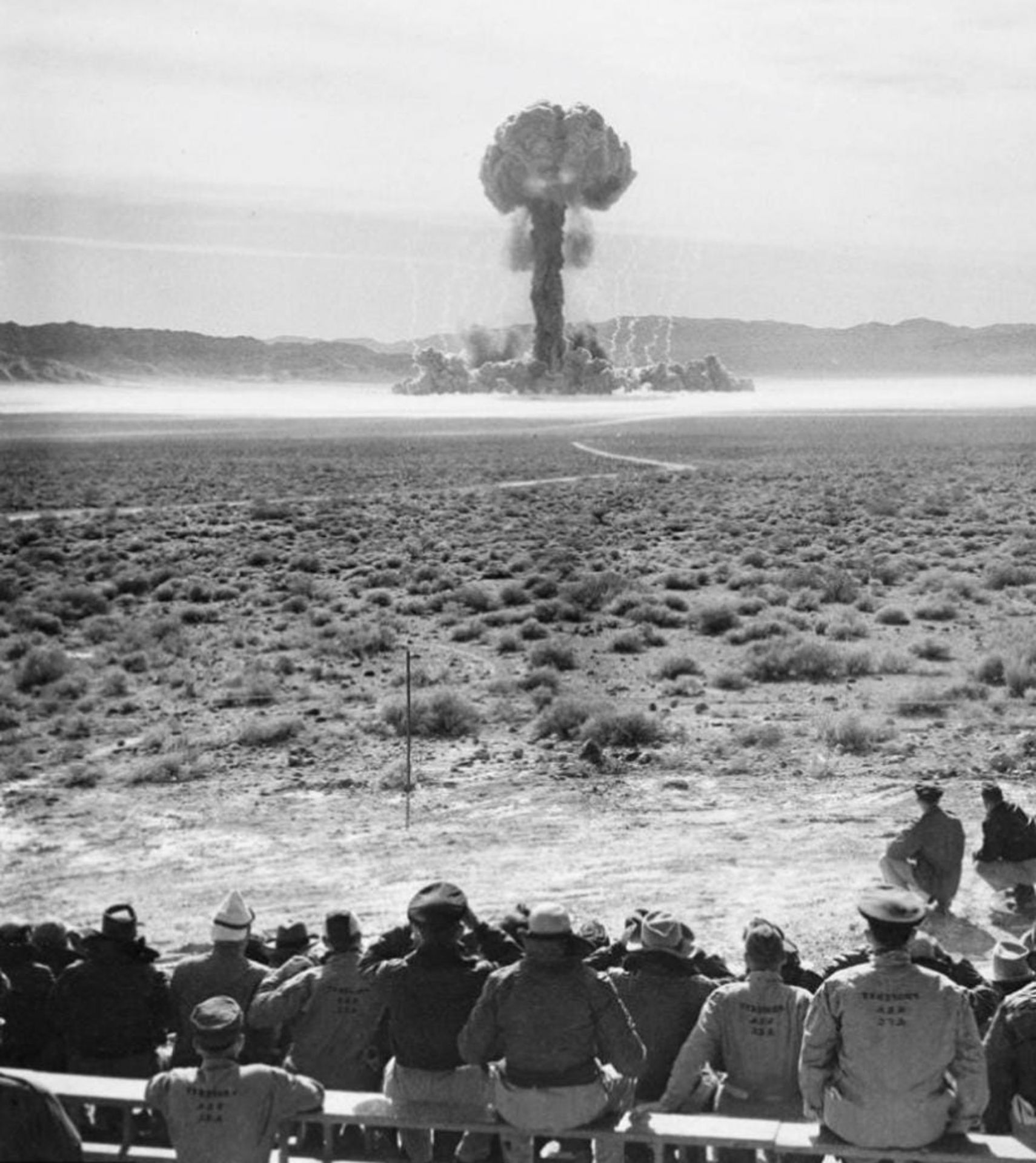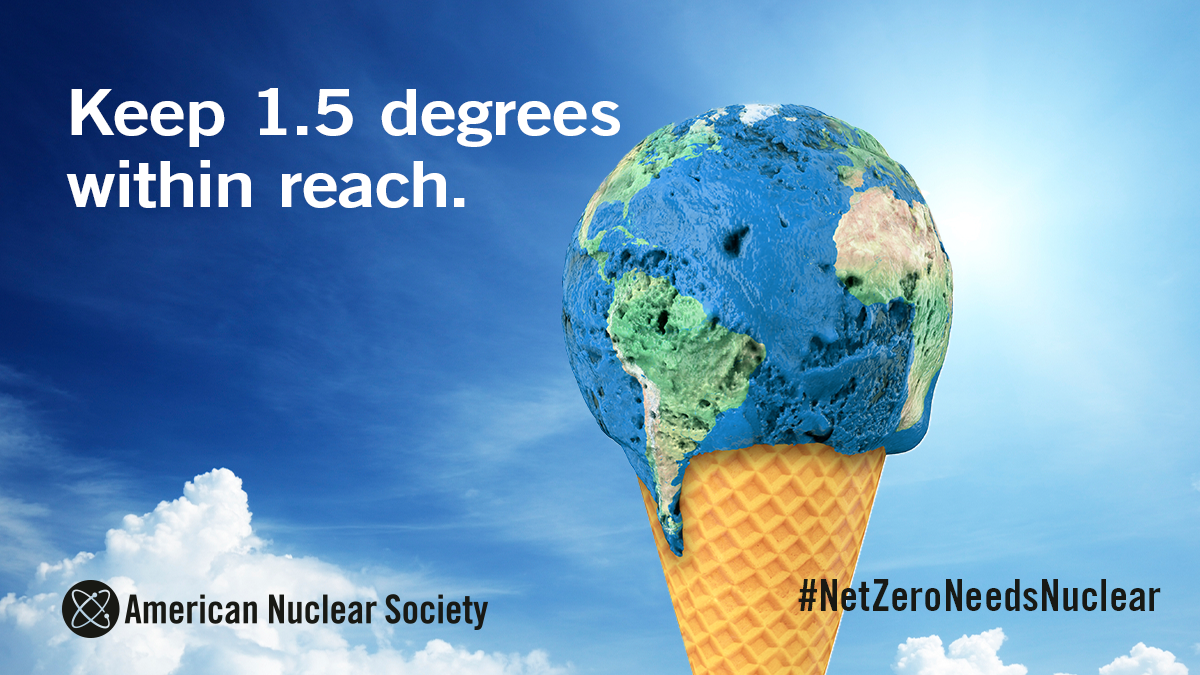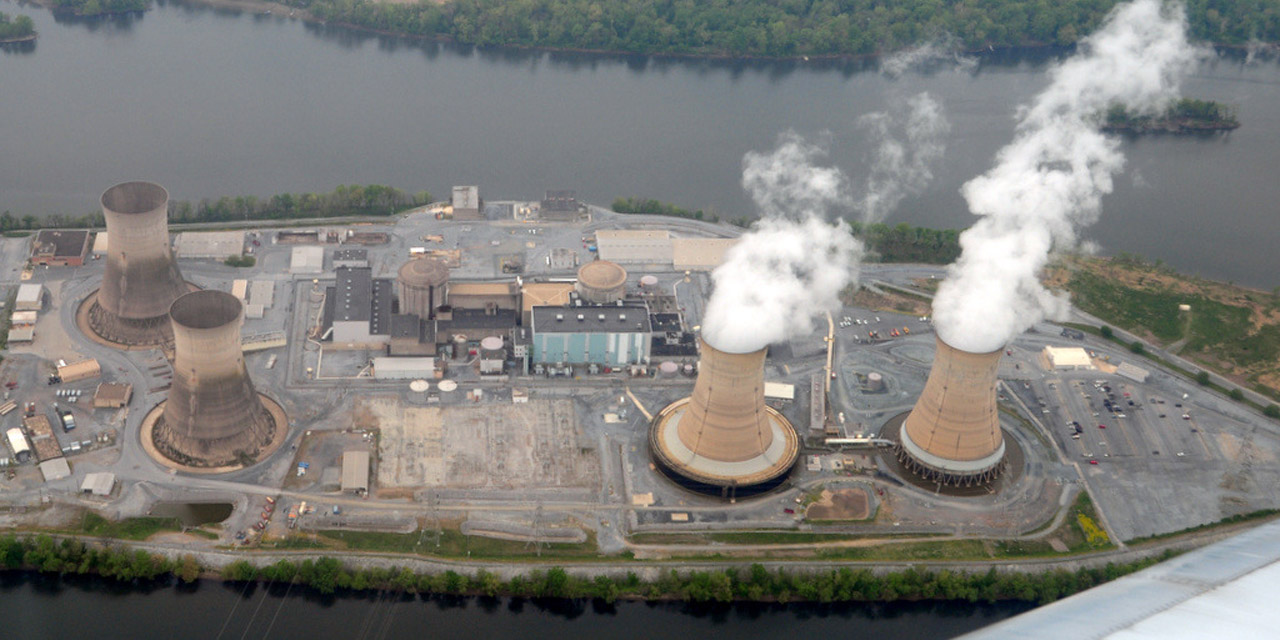While many Californians are hopeful the state’s last nuclear power reactor can be saved, PG&E is actively preparing for decommissioning.
The Diablo Canyon nuclear power plant in San Luis Obispo County, Calif.
(Photo: Wikimedia Commons)
The reports of the death of the Diablo Canyon nuclear power plant may be greatly exaggerated. While Pacific Gas and Electric (PG&E) announced as early as 2016 that it would be closing California’s last operating nuclear power plant at the end of its current operating license, there has been growing political pressure to keep the plant, and its 2,200 MWe of carbon-free energy, running.
The first sector of the ITER vacuum vessel was placed in the assembly pit in May. Here, a technician positions targets on the surface of the component to be used in laser metrology. (Photo: ITER Organization)
Delivery of electricity from fusion is considered by the National Academies of Engineering to be one of the grand challenges of the 21st century. The tremendous progress in fusion science and technology is underpinning efforts by nuclear experts and advocates to tackle many of the key challenges that must be addressed to construct a fusion pilot plant and make practical fusion possible.
Research being done at INL’s Energy Systems Laboratory is providing information on how nuclear power plants can contribute to effective energy storage and discharge, to aid in arbitrage. (Photo: INL)
Can nuclear power plants prosper in the grid of 2030 or 2035, when new wind and solar farms will make electricity prices even more volatile? Can plants install energy storage that will help them keep running at full power, 24/7, to ride out times of surplus and sell their energy only when prices are high?
An approach to future plant fabrication and siting suitable for many reactor types and scales, with large potential worldwide benefits
July 29, 2022, 3:25PMNuclear NewsMichael Golay, Jacopo Buongiorno, and Neil Todreas The offshore plant combines two mature technologies: the floating rig and the nuclear reactor.
In recent years, the rate of building new nuclear power plants has slowed internationally except in some rapidly developing countries. In Western countries that have considerable experience with nuclear power, completion of new projects on time and on budget has become more difficult. Shipyard-fabricated plants may offer a new direction for meeting international needs and responding to requirements for better cost control and safety. In this article we offer an overview of the floating nuclear power plant concept, including experience with it to date and its key engineering and strategic features, along with related uncertainties and needed conditions for future projects to be successful.
A view of the entrance to tower #22, showing the dismantled part of an inclined column.
While the construction of two additional reactors at Slovakia’s Mochovce nuclear plant (Units 3 and 4) may get most of the attention, it isn’t the only major project underway there. In October of last year, plant owner Slovenské Elektrárne commenced the first phase of an effort to revitalize two of the four 125-meter-tall, Iterson-type cooling towers that serve the facility’s two operating reactors—both of which began generating electricity in the late 1990s. Towers #11 and #21 had been refurbished in 2011 and 2012, respectively. The other two, however, towers #12 and #22, had never undergone refurbishment.
A view of Palo Verde-3 and a spray pond, as seen from Unit 2. (Photo: APS)
In the western part of Michigan, where I grew up and spent the early part of my career, water availability was rarely a concern or a topic that might appear in the news. Lake Michigan was a plentiful source of water, and Mother Nature always provided plenty of precipitation to keep things green. If anything, sometimes folks wished it would stop raining! So it was quite a big change in environment when in 2008 my career took me to the desert of Arizona and the Palo Verde Generating Station, with annual regional rainfall totals of three inches in a good year.
As the 68th ANS president, the career veteran of the NRC looks to create a more visible, proactive Society.
Steven Arndt began his one-year term last month as president of the American Nuclear Society, bringing the same high level of energy, investment, and action he has exhibited throughout his career. Reflecting on a life spent improving nuclear safety and technology, he notes that it’s not just the work; it’s also about the people and building connections and relationships. Arndt fondly recalls Peter Lyons, former NRC commissioner, assistant secretary of energy for nuclear energy, and ANS board member who passed away in April 2021. “I have been incredibly lucky to know and work with some great people in our field, and almost to a person they have been like Pete Lyons,” Arndt said. “They have been gregarious, outgoing, and supportive.”
Statement from American Nuclear Society President Steven Arndt and Executive Director/CEO Craig Piercy.
Statement from American Nuclear Society President Steven Arndt and Executive Director/CEO Craig Piercy:
"The American Nuclear Society applauds the California State Legislature for passing legislation that, among other things, would support the option of continued operations of the Diablo Canyon nuclear power plant. We thank Gov. Newsom for his support and reconsideration of the state’s decision to prematurely shutter California’s largest clean energy resource. We look forward to the signing ceremony.
Government policies and innovative technologies are the key to fusion energy economics
May 27, 2022, 4:38PMNuclear NewsBart Gordon, Tim Peckinpaugh, Mike O’Neill, and Molly Barker Artist’s rendering of the U.K.'s STEP fusion reactor. (Image: U.K. Atomic Energy Authority)
Fusion energy is attracting significant interest from governments and private capital markets. The deployment of fusion energy on a timeline that will affect climate change and offer another tool for energy security will require support from stakeholders, regulators, and policymakers around the world. Without broad support, fusion may fail to reach its potential as a “game-changing” technology to make a meaningful difference in addressing the twin challenges of climate change and geopolitical energy security.
The process of developing the necessary policy and regulatory support is already underway around the world. Leaders in the United States, the United Kingdom, the European Union, China, and elsewhere are engaging with the key issues and will lead the way in setting the foundation for a global fusion industry.
The accident at Three Mile Island revealed many areas for improvement in the safety of nuclear power that have been addressed continuously in the past 40 years.
Part one of this article, published in the May 2019 issue of Nuclear News[1] and last Friday on Nuclear Newswire, presented insights from the 1979 accident at Three Mile Island-2 and addressed several issues raised by a previous Nuclear News piece on the accident[2]. Part two discusses safety improvements that have been made by both the industry and the Nuclear Regulatory Commission over the past 40 years.


















